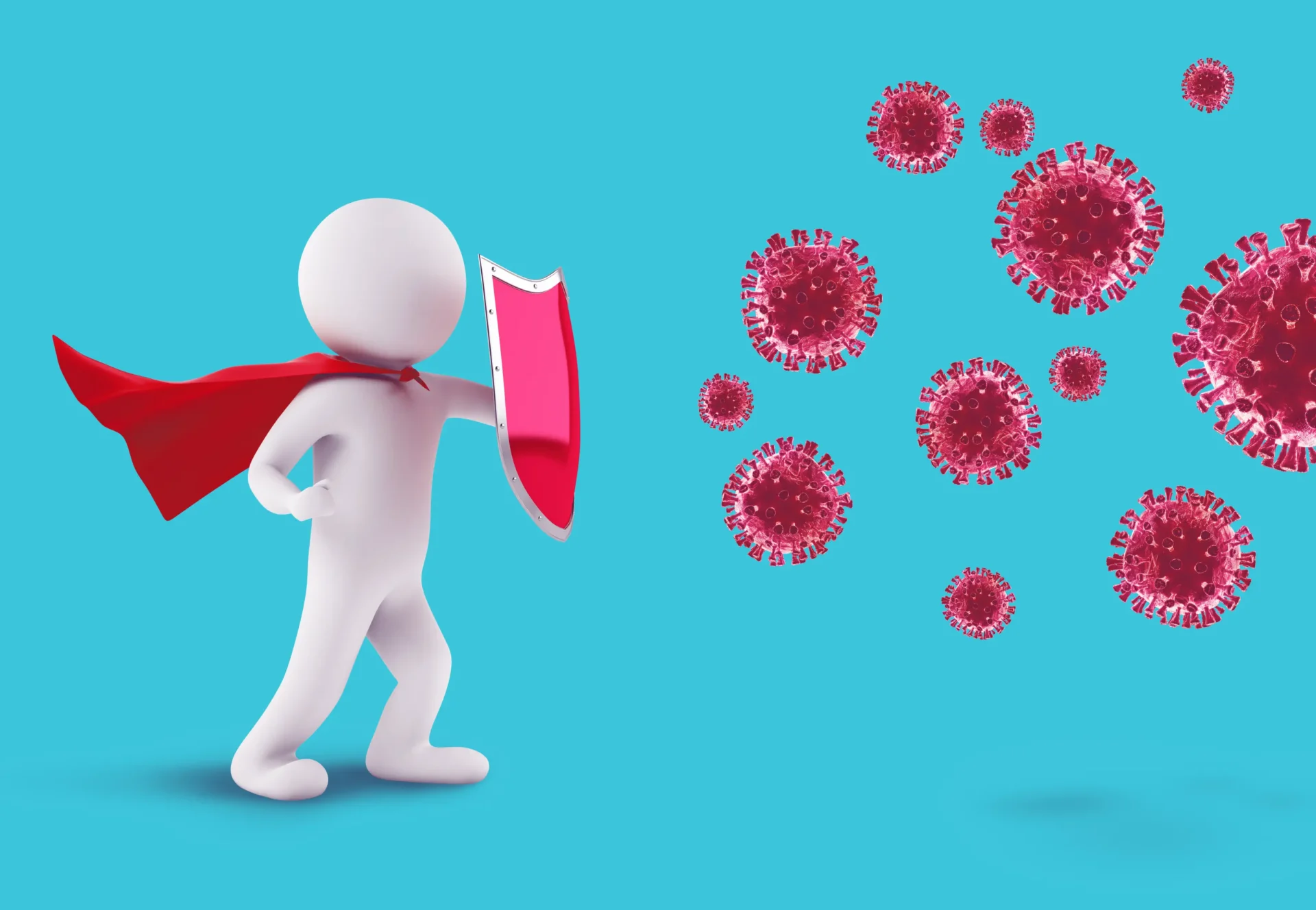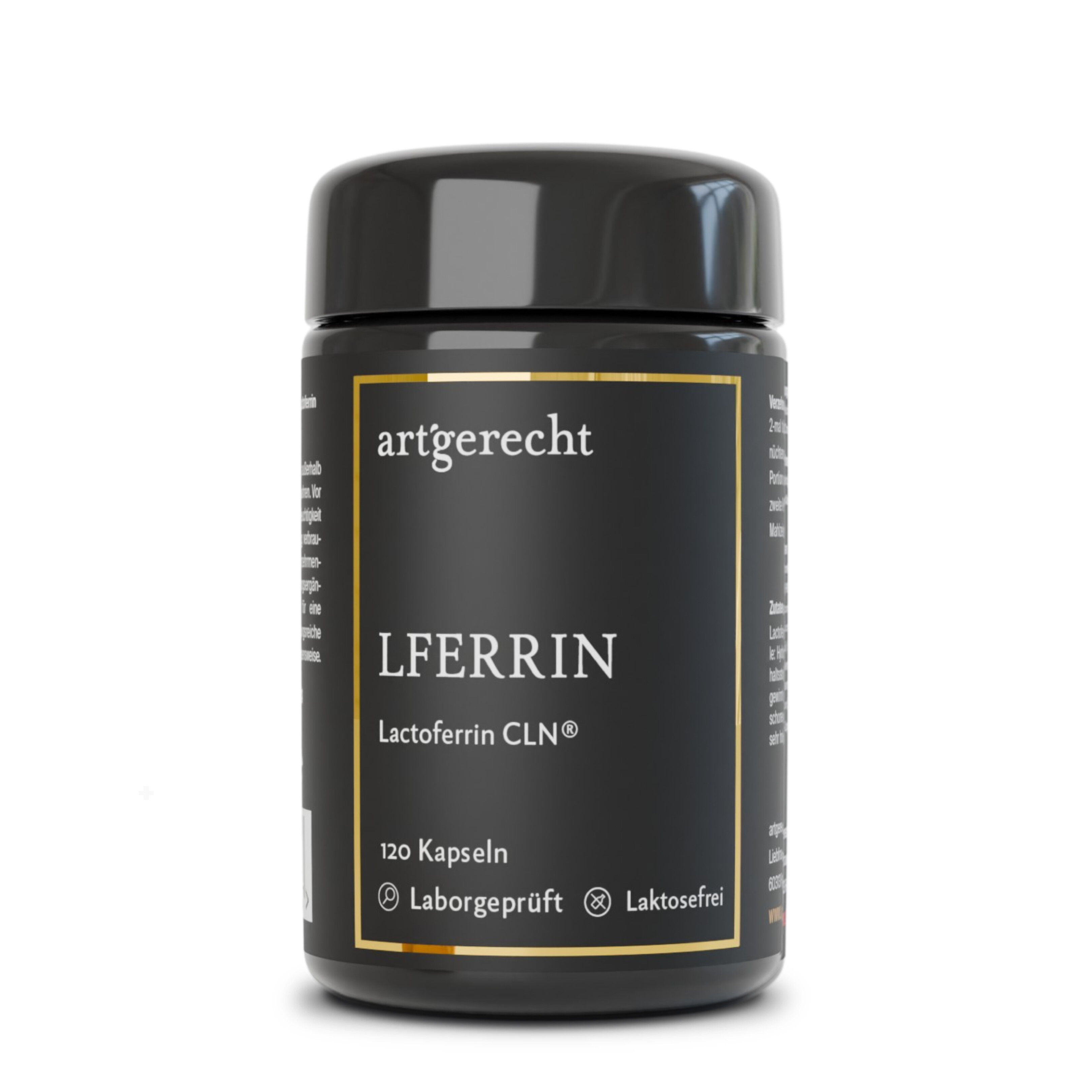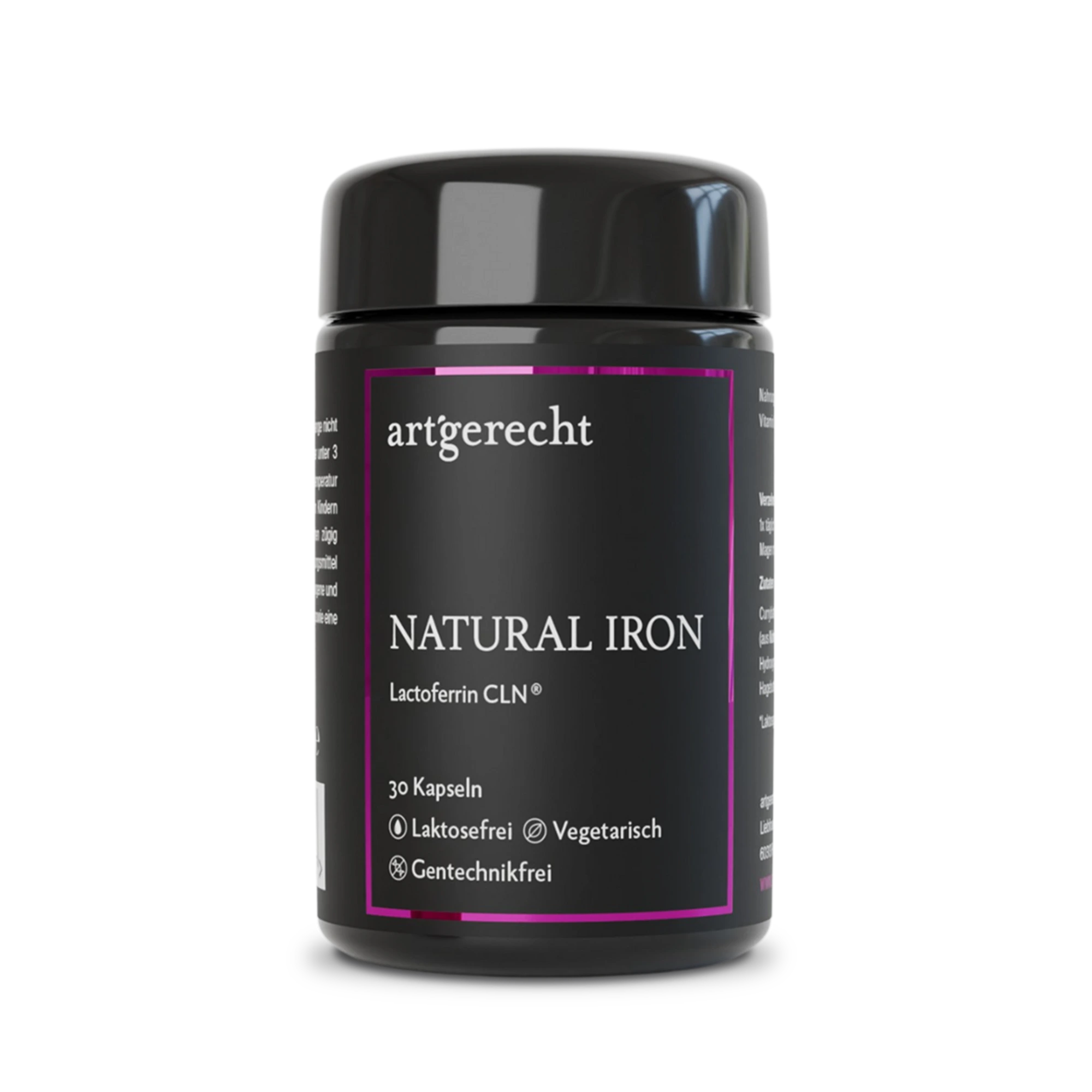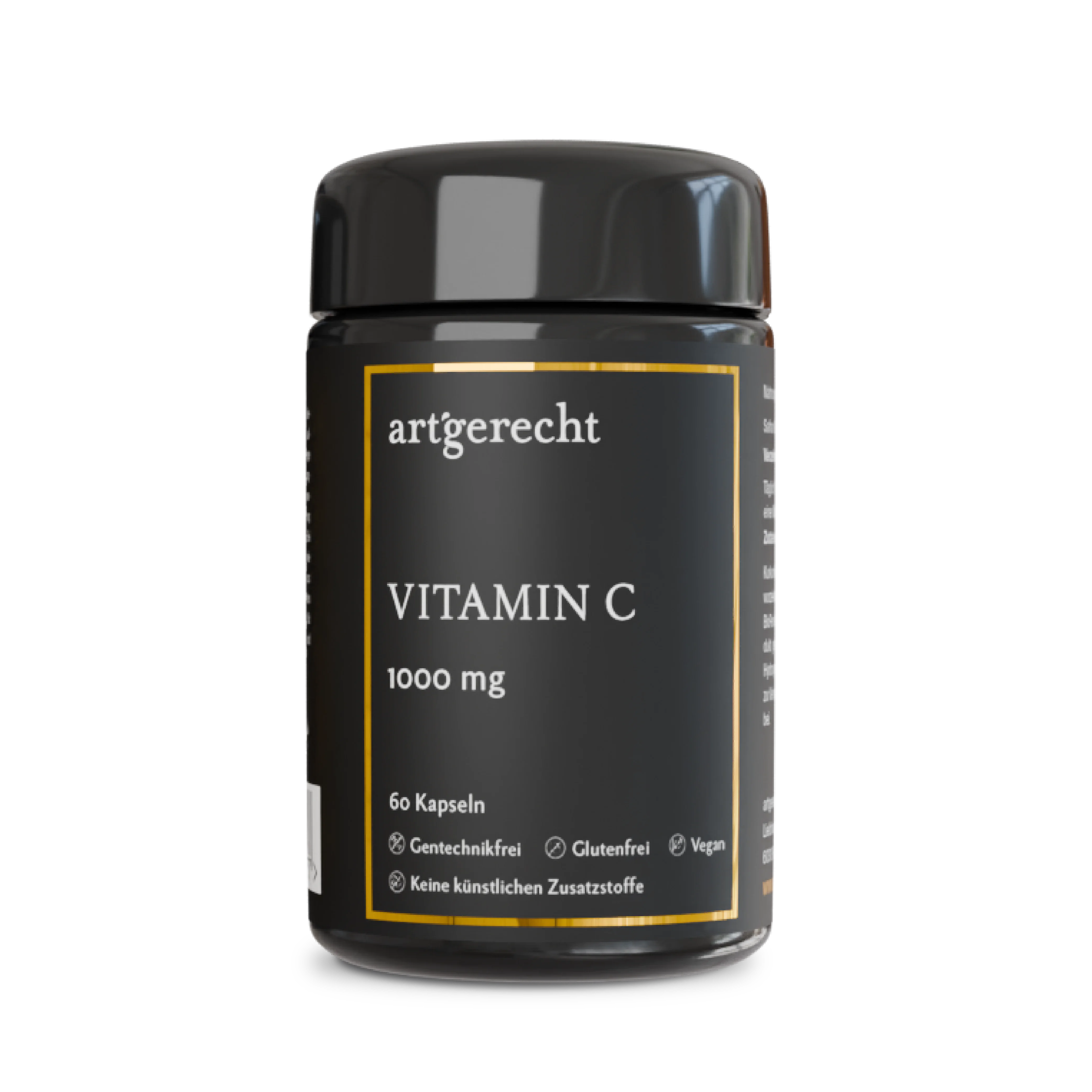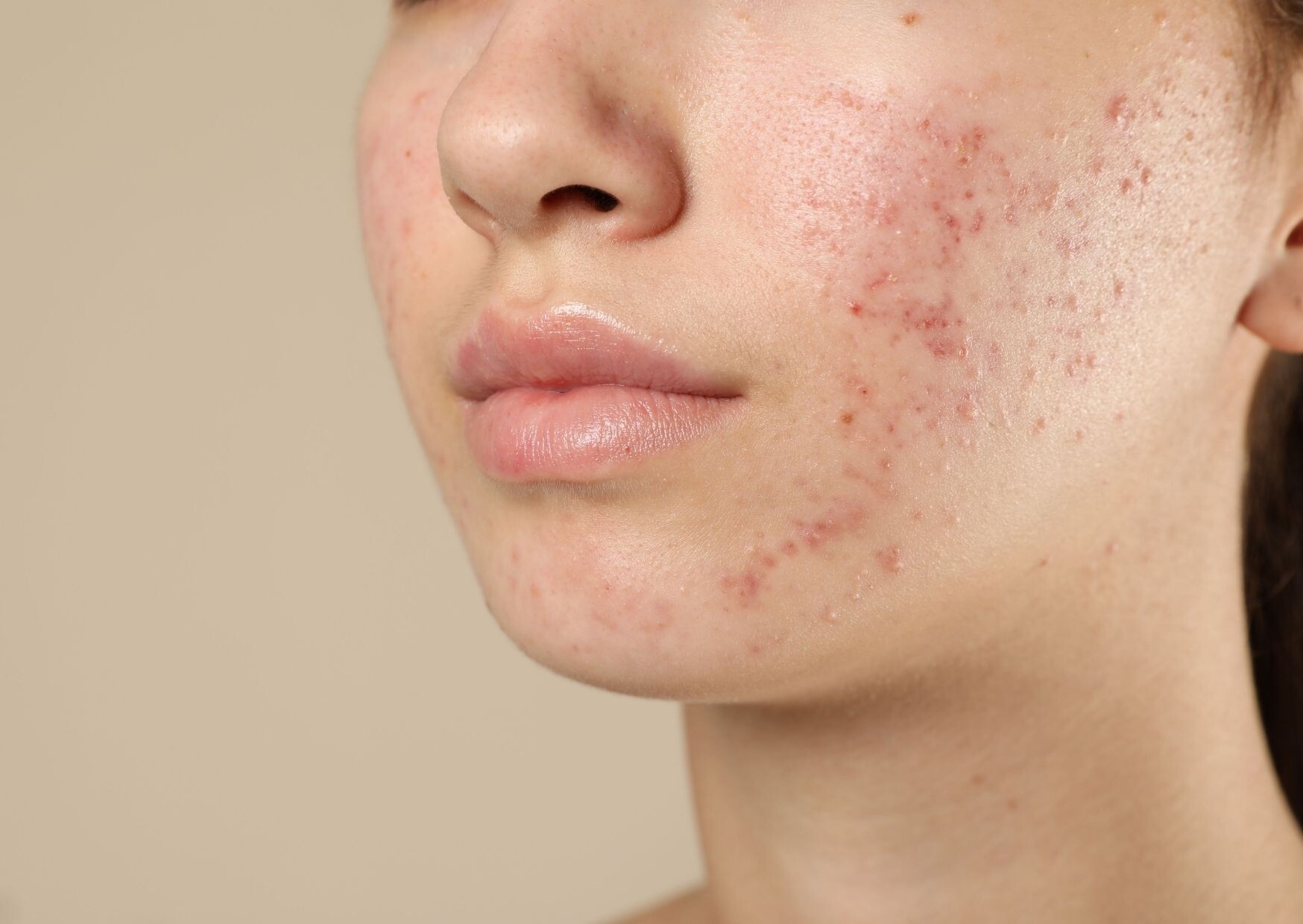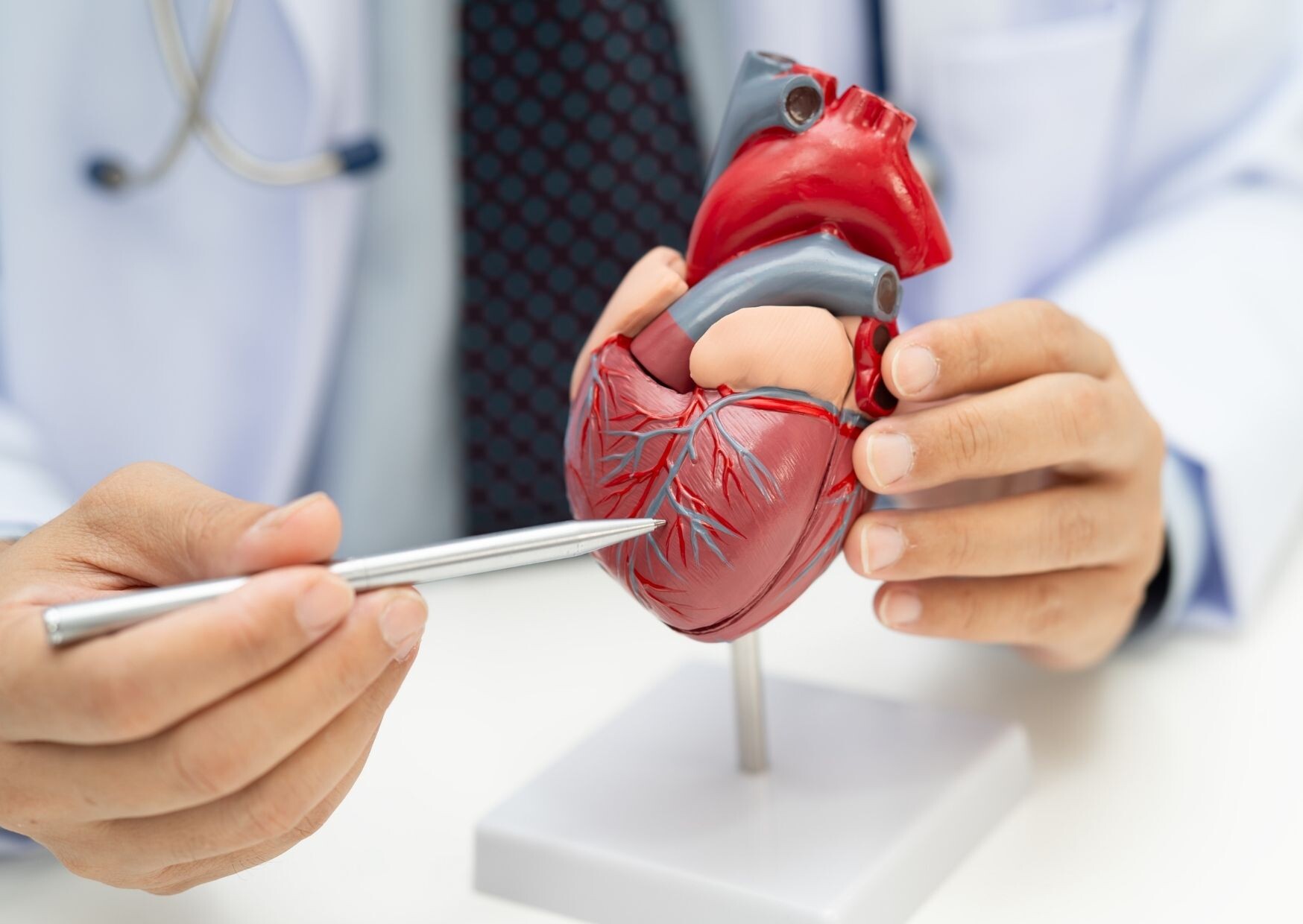Lactoferrin, the multifunctional protein with many immunological properties, has demonstrated its great potential in the fight against viruses in countless studies. There is hardly any other endogenous substance that has so much presence on the outer surfaces of the body and is as gentle as it is effective against viruses.
In vitro and in vivo studies in humans show a direct antiviral activity of lactoferrin against untreated and treated DNA and RNA [1-3]. Lactoferrin inhibits the entry of the virus into the cell, either by direct binding to the virus or by blocking the corresponding receptor of the virus. In vitro studies have shown lactoferrin to be successful in combating CMV, hepatitis, HIV, herpes simplex, rotavirus, poliovirus, adenovirus and Mayaro viruses [4].
The highly effective virus defense takes place via various mechanisms:
- Inhibition of infiltration
Lactoferrin acts in the acute phase of infection by inhibiting the entry of the virus into the cell [4]. - Binding to the virus
Lactoferrin can also bind directly to viruses and inhibit replication by binding to viral glycosaminoglycans and lipopolysaccharides [4].
In addition, lactoferrin can support other parts of the immune defense. Lactoferrin increases the activity of natural killer cells and stimulates the aggregation and adhesion of immune cells (neutrophil granulocytes) in the immune defense [5].
Wide range of applications
The areas of application for lactoferrin in defense against viruses are very broad, whether in prevention, acute defense or in combination with other drugs. Lactoferrin shows a synergistic effect in combination with antiviral drugs such as zidovudine (HIV-1), cidofovir (cytomegalovirus), acyclovir (herpes simplex type 1 and 2) as well as interferon and ribavirin (hepatitis C virus) [6-8].
Lactoferrin and COVID-19
A recent article by Kell et al [9] deals in detail with the question of the extent to which lactoferrin can also be a support in the fight against COVID-19.
COVID-19 is caused by the Severe Acute Respiratory Syndrome Coronavirus 2 (SARS-CoV-2). It is known that lactoferrin is able to interact with at least some of the receptors used by SARS-CoV-2. It is therefore conceivable that lactoferrin can contribute to the prevention and treatment of coronavirus infection.
This article shows that lactoferrin can bind to at least some of the receptors that are used by coronaviruses as entry points. Relevant in this case are heparan sulphate proteoglycans (HSPGs) and the transmembrane enzyme angiotensin converting enzyme 2 (ACE2).
These molecules represent a kind of anchoring site on the surface of the cell and help the virus to establish initial contact with the cell [1,10]. SARS-CoV bound to HSPGs then rolls on the cell membrane and searches for specific entry ports, which leads to subsequent cell entry [1]. HSPGs can be either membrane-bound or in secretory vesicles and in the extracellular matrix [11]. It has been shown that lactoferrin can prevent the internalization of some viruses by binding to HSPGs [1].
While it is not the HSPGs alone that allow SARS-CoV to actually enter the cell, they play an important role in the process of cell entry [1].SARS-CoV ultimately enters the host cell via the ACE2 receptor [12]. ACE2 is strongly expressed in human lung cells, enterocytes of the intestine and in the tubular cells of the kidney [1]. How exactly this process works in SARS-CoV2 requires further research, but by blocking the specific receptors, lactoferrin makes them unavailable to the virus and therefore plays an important role in host immunity [13,14,15].
A COVID-19 infection, like other infections, can trigger an exaggerated inflammatory reaction caused by a so-called cytokine storm [16]. This leads to an excessive activation of the thrombocytes (blood platelets), which in turn can cause thrombocytopenia. Thrombocytopenia is associated with an increased risk of severe events and mortality in patients with COVID-19 [17].
Many COVID-19 patients develop acute respiratory distress syndrome (ARDS) [16], which in many cases leads to pulmonary dementia and respiratory failure.These symptoms are associated with low levels of inflammatory mediators in the blood, the hallmark of cytokine storm [16,18]. This cytokine storm is one of the main causes of high mortality in Covid-19 infection. Animal and human studies suggest that lactoferrin may have clinical benefits in the prevention and alleviation of cytokine storm and its devastating consequences in the lung [19].
In summary, lactoferrin may play a protective role in the defense against SARS-CoV infection by binding to HSPGs and blocking the initial interaction between SARS-CoV and host cells [1]. Lactoferrin could also be used both prophylactically and therapeutically in patients at risk of SARS-CoV-2 infection [19].
Sources
1 Lang J, Yang N, Deng J, Liu K, Yang P, Zhang G, Jiang C. Inhibition of SARS Pseudovirus Cell Entry by Lactoferrin Binding to Heparan Sulfate Proteoglycans. PLoS ONE 2011; 6.
2 Chen J-M, Fan Y-C, Lin J-W, Chen Y-Y, Hsu W-L, Chiou S-S. Bovine Lactoferrin Inhibits Dengue Virus Infectivity by Interacting with Heparan Sulfate, Low-Density Lipoprotein Receptor, and DC-SIGN. International Journal of Molecular Sciences 2017; 18.
.3 Carvalho CAM, Casseb SMM, Gonçalves RB, Silva EVP, Gomes AMO, Vasconcelos PFC. Bovine lactoferrin activity against Chikungunya and Zika viruses. The Journal of general virology 2017; 98: 1749–1754.
4 Redwan EM, Uversky VN, El-Fakharany EM, Al-Mehdar H. Potential lactoferrin activity against pathogenic viruses. Comptes rendus biologies 2014; 337: 581–595.
5 Reghunathan R, Jayapal M, Hsu L-Y, Chng H-H, Tai D, Leung BP, Melendez AJ. Expression profile of immune response genes in patients with Severe Acute Respiratory Syndrome. BMC Immunology 2005; 6.
6 Zuccotti GV, Vigano A, Borelli M, Saresella M, Giacomet V, Clerici M. Modulation of innate and adaptive immunity by lactoferrin in human immunodeficiency virus (HIV)-infected, antiretroviral therapy-naïve children. International journal of antimicrobial agents 2007; 29: 353–355.
7 Jenssen H, Hancock REW. Antimicrobial properties of lactoferrin. Biochimie 2009; 91: 19–29.
.8 González-Chávez SA, Arévalo-Gallegos S, Rascón-Cruz Q. Lactoferrin: structure, function and applications. International journal of antimicrobial agents 2009; 33: 301.e1-8.
.9 Kell DB, Heyden EL, Pretorius E. The Biology of Lactoferrin, an Iron-Binding Protein That Can Help Defend Against Viruses and Bacteria. Frontiers in immunology 2020; 11: 1221.
10 Belting M. Heparan sulfate proteoglycan as a plasma membrane carrier. Trends in Biochemical Sciences 2003; 28: 145–151.
11 Sarrazin S, Lamanna WC, Esko JD. Heparan sulfate proteoglycans. Cold Spring Harbor Perspectives in Biology 2011; 3.
.12 Baig AM, Khaleeq A, Ali U, Syeda H. Evidence of the COVID-19 Virus Targeting the CNS: Tissue Distribution, Host-Virus Interaction, and Proposed Neurotropic Mechanisms. ACS chemical neuroscience 2020; 11: 995–998.
13 Baveye S, Elass E, Mazurier J, Spik G, Legrand D. Lactoferrin: a multifunctional glycoprotein involved in the modulation of the inflammatory process. Clinical chemistry and laboratory medicine 1999; 37: 281–286.
14 Elass-Rochard E, Legrand D, Salmon V, Roseanu A, Trif M, Tobias PS, Mazurier J, Spik G. Lactoferrin Inhibits the Endotoxin Interaction with CD14 by Competition with the Lipopolysaccharide-Binding Protein. Infection and Immunity 1998; 66: 486–491.
15 Teraguchi S, Wakabayashi H, Kuwata H, Yamauchi K, Tamura Y. Protection against infections by oral lactoferrin: evaluation in animal models. Biometals : an international journal on the role of metal ions in biology, biochemistry, and medicine 2004; 17: 231–234.
16 Mehta P, McAuley DF, Brown M, Sanchez E, Tattersall RS, Manson JJ. COVID-19: consider cytokine storm syndromes and immunosuppression. The Lancet 2020; 395: 1033–1034.
.17 Lippi G, Plebani M, Henry BM. Thrombocytopenia is associated with severe coronavirus disease 2019 (COVID-19) infections: A meta-analysis. Clinica Chimica Acta; International Journal of Clinical Chemistry 2020; 506: 145–148.
18 Kell DB, Pretorius E. To What Extent Are the Terminal Stages of Sepsis, Septic Shock, Systemic Inflammatory Response Syndrome, and Multiple Organ Dysfunction Syndrome Actually Driven by a Prion/Amyloid Form of Fibrin? Seminars in thrombosis and hemostasis 2018; 44: 224–238.
19 Zimecki M, Actor JK, Kruzel ML. The potential for lactoferrin to reduce SARS-CoV-2 induced cytokine storm. Int Immunopharmacol. 2021;95:107571. doi:10.1016/j.intimp.2021.107571

